Unless you're a terf, racist, nazi, zionist, etc. DNI is mostly common sense. I post whatever tf I feel like here.
Don't wanna be here? Send us removal request.
Text
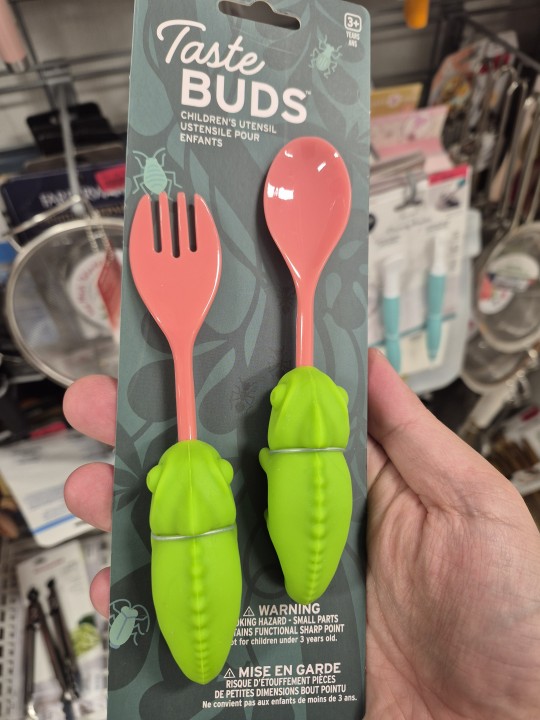

Buying these as mini digging tools for my terrarium jars
2K notes
·
View notes
Note
My mom's dead and my dad's an ass, so for mother's and father's day I go visit my grandparents instead.
is it okay to celebrate your grandfather on father's day?
42 notes
·
View notes
Text
Also: imagine the sounds that Ferengi would make during the birth. Vote quark!
NEED👏THAT👏MAN👏PREGNANT ROUND 6 POLL 5


PROPAGANDA:
[Bilbo]
"I just really love reading fics where hobbit mpreg is a thing, as well as uber-crazy hobbit fertility, and he and Thorin accidentally conceive some baby dwobbits (quite a shock to papa Thorin, considering how rare pregnancies are for dwarf couples). Bonus points if Frodo is their son."
"come on now, the little hobbit that has the love for adventure written into his soul who lived the first 50 years of his life convinced that the only Proper way to live is entrenched in hobbit propriety- where leaving home and forging your own path is considered most wretched luck imaginable.
living alone, stifled, in his big empty house until a harem of dwarfs come and enchant him with the call for something More. something that lights a Flame in him.

he's the heroine of a boddace ripper, and I'm not even joking.
the whole premise of that fantasy is that you're given what you want without having to take responsibility for Wanting it. you have no choice, so who could blame such a polite, well-to-do, hobbit for going against the grain?
and bilbo is Both, really. the soft, sturdy, manner of a hobbit and the reliable, guiding, manner of an adventurer. brought in harmony for the first time in his life by that band of rugged dwarfs.
he's changed forever, and carries that difference back with him to his cozy hole in the shire. I think it only appropriate that that difference be more literal, bringing into the world frodo baggins. who will take the call to adventure after him <3
oooooooh middle aged housewife bilbo who lives the fantasy of Excitement that he dare not speak allowed, to even acknowledge to himself that he wants, until he's pulled in by thorin's orbit and shown how wonderful his life COULD be. just to lose it all and find himself unfitting for the world of hobbits, outgrowing that mold he'd forced himself to be content with all those years. And He's Pregnant !!!!"
""what's in your hand?" "It's nothing." "Show me." [Reveals acorn] "I picked it up in bjorn's garden." "You carried it all this way?" "I'm gonna plant it in my garden in bag end." "A small prize to take back to the shire." "One day it will grow, and every time I look at it I'll remember. Remember everything that happened, the good the bad, and how lucky I am that I made it home."
youtube
"I am so sorry that I have lead you to such peril" "No I'm glad to have shared in your perils thorin, each and every one of them. It's far more than any baggins deserves." "Farewell, master burglar. Go back to your books and your armchair. Plant your trees, watch them grow. If more people valued home above gold this world would be a merrier place."
youtube
DO YOU GET IT, DO YOU SEE THE VISION !! BILBO NEEDS TO PLANT HIS SEED AND WATCH IT GROW SO HE CAN FEEL AND REMEMBER THE JOYS AND SORROWS HE SHARED WITH THORIN. BECAUSE WHAT HE LOVES MOST IS HOME. WHETHER THAT BE HOME IN A COMFORTABLE HOLE IN THE GROUND, OR HOME WITH PEOPLE THAT YOU LOVE!!!!!!!!!!!!!"
Propaganda courtesy of @cardentist
[Quark]
"you know why."
489 notes
·
View notes
Text
Those science officers get smarter with every new star trek show.

474 notes
·
View notes
Text
Low space & low budget weaving
Want to weave but don't have space for a loom? Have a few sticks and yarns but no DIY skills? Come, be tempted anyway. Weaving is a whole family of crafts, some of which don't require a loom at all.
Small-ish looms like box looms (as basic as yarn wrapped around a cardboard grocery tray), inkle looms, and rigid heddle looms exist, but I'm assuming every possible space for a box in your life is already filled. In this post we're going even smaller and cheaper. As far as possible, everything either is flat enough to stow behind/under furniture or rolls up safely into a bundle of just sticks and yarn.
Many of these crafts have some crossover - the same setup can be used for multiple styles of weaving. Most of them can be improvised at home depending on what you have on hand, or if you need to buy something there is not a huge gulf between homemade vs professional equipment. Alas I am not skilled in any of these and my descriptions will not be wholly accurate; corrections and additions welcome! If you need help, I'd only be able to tell you to seek out books and tutorials yourself, ask other weavers, and just try stuff out.
All photos included with permission. My thanks to the people allowing me to use their projects! I saw so many gorgeous and skillful projects when assembling this and I wish I could have included them all.
Fingerweaving
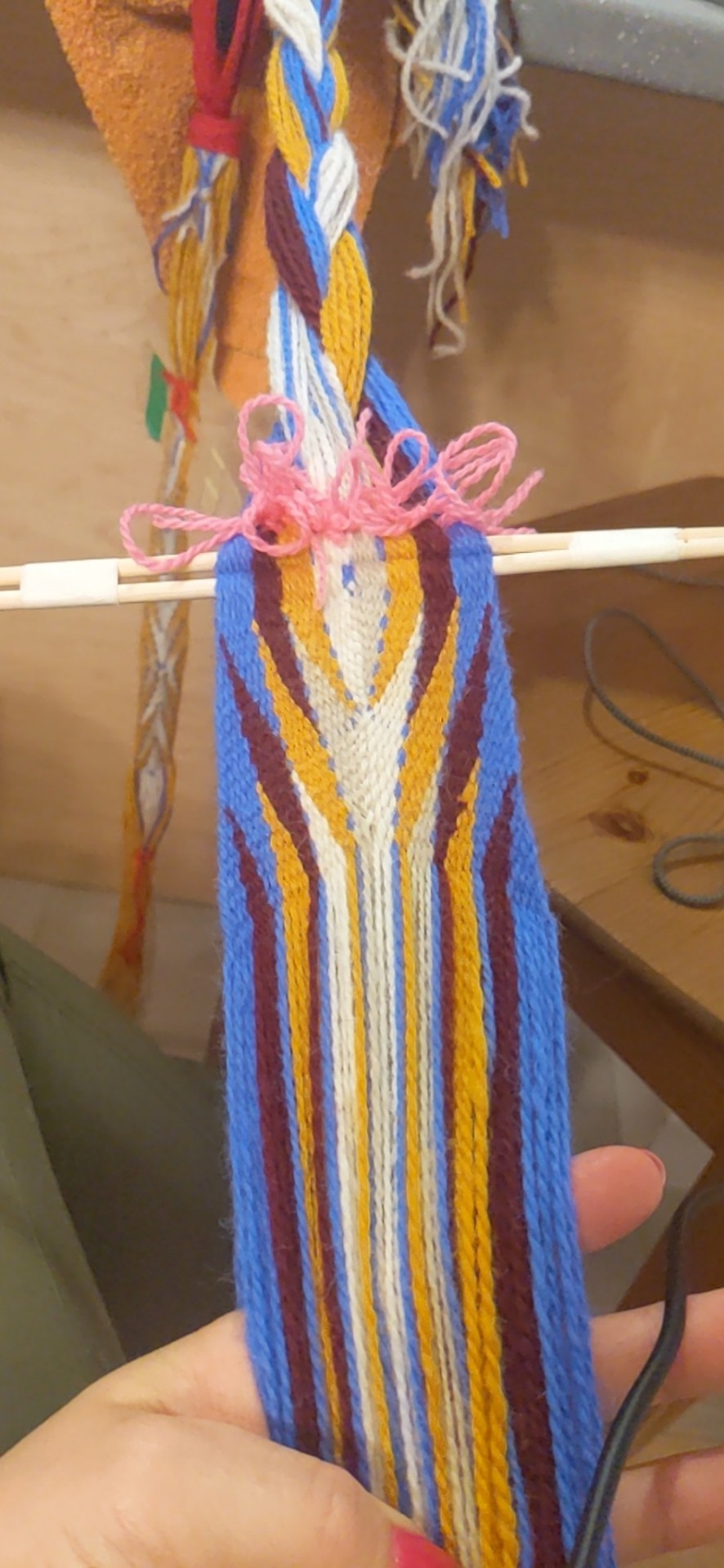

Projects by @kitteniestkitten (here) and @wefty-weaver (here)
Culture - I am aware of this as a Native American technique, I don't know its history with any more specific tribe.
Fabric - "Warp faced" cloth of any width, insofar as warp and weft have meaning for this craft as the weaving is on a diagonal. Often used for sashes or blankets.
Method - There is no loom! A couple sticks hold the yarns to begin with, but then it is all freehand. Starting at one corner, you use your fingers to weave a strand through the other strands, and... that's it. Very simple beginnings work up to very complex patterns that no loom is capable of. The whole project can be rolled up when not active.
Backstrap loom

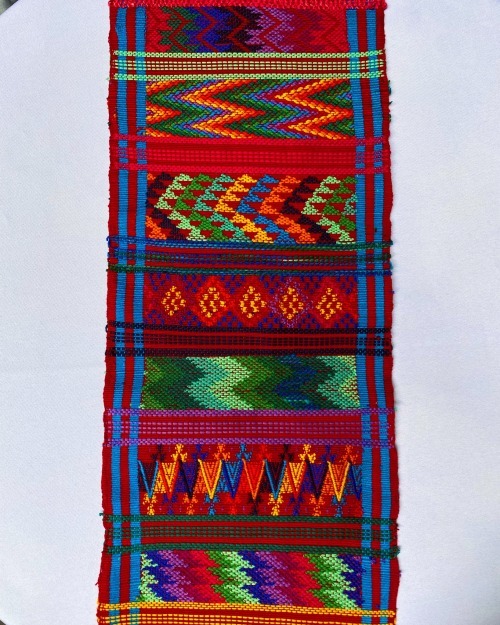
Projects by @calendae-creations (here) and @weavingforlooms (here)
Culture - I am most aware of this from the Andes but I think it is much more widespread than that.
Fabric - Warp faced or balanced fabric of any width up to your own reach, suitable for blankets and clothes and many other things.
Method - You are the loom! Several horizontal rods hold and manipulate the warp threads but your body provides the tension, with the other end hooked to some furniture or around your own feet. When not in use, you can roll up all the equipment into a small bundle of yarn and rods. You can also use a backstrap loom setup for other methods like tablet weaving.
Warp weighted loom

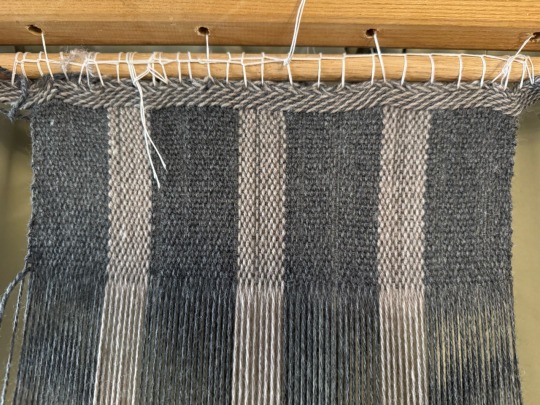
Projects by @shadowcreepling (here) and @doctormead (here)
Culture - used by ancient Greeks among many many others.
Fabric - any kind of fabric at any size. Shadowcreepling is using a warp weighted loom for a tablet-woven band, Doctormead is probably using heddle rods to make a wider piece of cloth.
Method - the warp threads are held by a bar at the top and tensioned with weights on one end that hang down towards the floor, then the weft is woven into them with any method such as tablets, heddle rods, or by hand (if you have a lot of patience) and beaten into firm fabric at the top or bottom of the loom. Warp weighted looms can be very big, but they are simple and can also be very small and taken apart when not actively weaving.
Tablet weaving / card weaving


Projects by @damage-ko (here) and @foxease (here, hardware from CellesKit on Etsy)
Culture - found as far apart as textiles (geographically and temporally) from Byzantine Egypt and the Vikings
Fabric - a warp faced fabric with patterns made by twining warp threads around each other, usually used for strong narrow bands like collars, belts, and shoelaces.
Method - the cards hold open the shed so you can pass the weft through, then rotate the cards to advance the pattern. Many people make their own with cardboard or playing cards, or you can buy some. The rest of the weaving setup can be improvised with a backstrap (or just a shower curtain hook clipped to your trousers), a cardboard box loom, or warp weights.
Rigid heddle band weaving


Projects by @pisaracraft (here) and @crookedtines (here)
Culture - small rigid heddles like the first project have been found in Roman archaeological sites across Europe. The larger rigid heddle in the second project is being used for "baltic pickup" style designs on the band.
Fabric - can be warp faced or a balanced weave, size limited by the size of your heddle.
Method - you provide tension with any setup you please such as an inkle loom, backstrap, or warp weights. The heddle creates sheds so that you can pass weft yarn through the warp easily. Infinitely many "pick-up patterns" let you weave patterns and even words into the cloth.
Pin loom / potholder loom
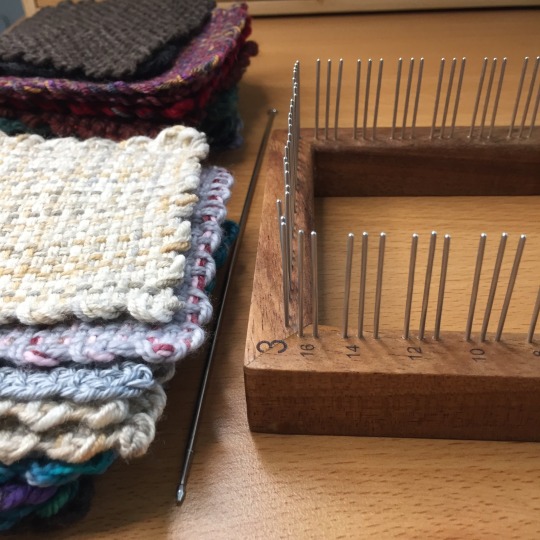

Projects by @pardalote (here) and @weavingmyheartout (here)
Fabric - a small square (or rectangle or triangle) of balanced weaving, which can be used alone or patched together into larger fabrics. Pin looms are finer and suitable for many knitting/crochet yarns, potholer looms are chunkier and designed for big elastics, but the method is similar.
Method - wind yarn lengthways around one set of pins and then pull yarn widthways through these strands with a hook. Or, work at 45 degrees in continuous strand weaving! Lots of room to experiment with colour and texture. You can improvise a pin loom by cutting notches in a square of sturdy cardboard.
Needle weaving / stick weaving / peg loom
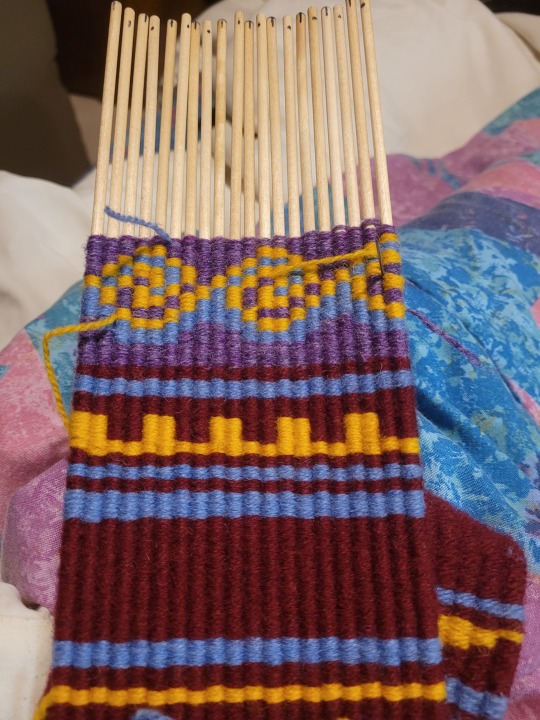

Projects by @thaylepo (here) and @pastelispunx (here)
Fabric - weft-faced fabric and rugs of any size.
Method - thread long thin warp threads through the pegs, then wind a thick weft (eg heavier yarn, sheep fleece, or long scraps of fabric) around the pegs. Push the weft down along the pegs as they fill up, so that it slides off onto the warp. The pegs can be secured in a base to make a peg loom for large projects, or just handled freely. I believe these evolved as separate crafts and the nuances are different, but the overall method is similar.
Frame loom / tapestry loom


Projects by @squeakygeeky (here) and @battlestar-gasmacktica (here)
Fabric - weft-faced or balanced fabric ideal for wall hangings and upholstery, size limited to the frame being used.
Method - (usually) thinner warp threads are wound round a frame, such as heavy cardboard with notches cut in the end, a picture frame, or a small and flat purpose-made loom. Thicker weft threads are woven in by hand using needles or just small lengths of yarn. Some people make lifelike images, others make more ordinary fabrics or geometric patterns.
Bobbin lace
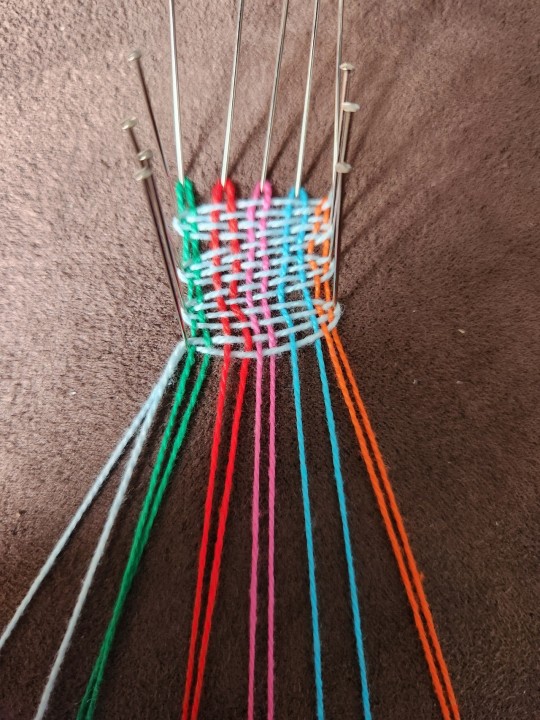
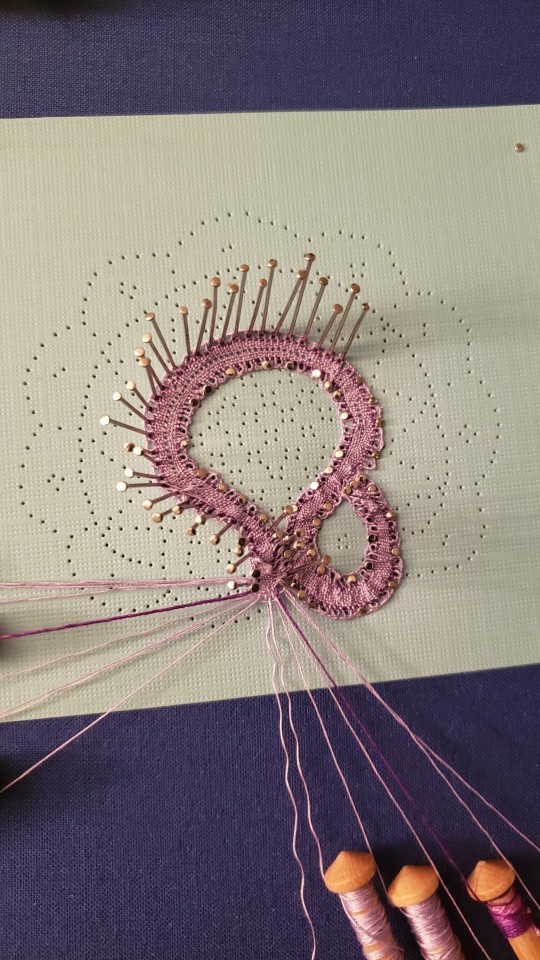
Projects by @crochetpiece (here) and @noxx-notions (here)
Culture - began in renaissance Italy and spread throughout Europe, often as a cottage industry.
Fabric - balanced fabric usually made of very thin threads in freeform shapes. It's not usually considered "weaving" but the basic cloth stitch is definitely a woven fabric!
Method - each thread is wound onto a bobbin (e.g. a clothespeg) and then bobbins are crossed over each other to weave threads together. The lace is pinned to a cushion to hold everything in place while the design grows.
4K notes
·
View notes
Text




a stumpy dryad. glaze turned out more charcoaly than I expected but i think it suits him
2K notes
·
View notes
Text
This ad is a malicious ad. All ad is malicious ad.
0 notes
Text
Good news from April 2025.
Check out the long form video on YouTube for even more good news.
3K notes
·
View notes
Text
That cat's gonna be so static
Living his best life
46K notes
·
View notes
Text
Reblogging for the animal frolicking noises
122K notes
·
View notes
Text

Needle felted spring bulbs. Perhaps the deer won’t eat these ones.
5K notes
·
View notes
Text
Have you ever looked at a 24 hour clock and gone "too straight forward!"? Ever looked at a 12 hour clock and thought "what if we divided it again?" WELL FEAR NOT, I am pioneering the 6 hour clock; featuring the classic times we all know and love like 3pm and 7am as well as all new times such as 6aam and 8ppm! The new clock layout that solves nothing and makes everything worse!
#this will not fix my time blindness#but it will make things so much worse for everyone else#let's do it
10K notes
·
View notes
Text
41K notes
·
View notes
Text


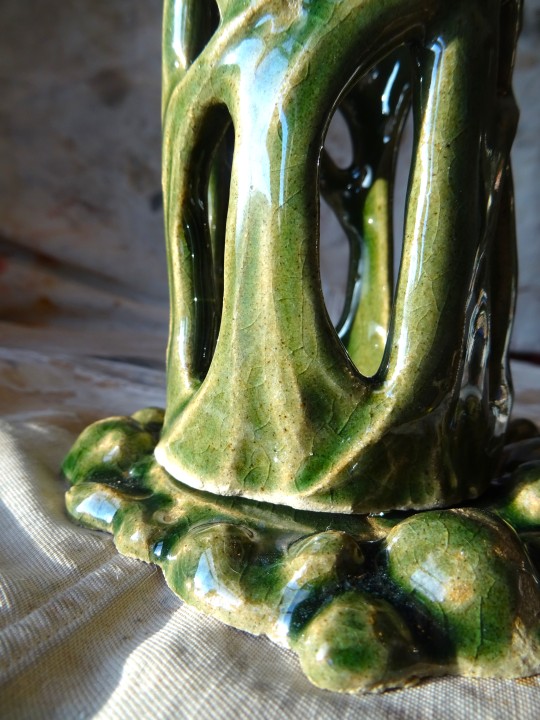




My recent ceramic creations in the light of day. Loving how these glazes look in the sunlight!
343 notes
·
View notes





